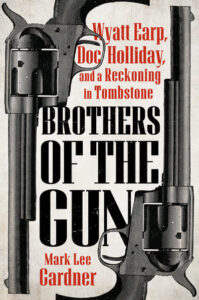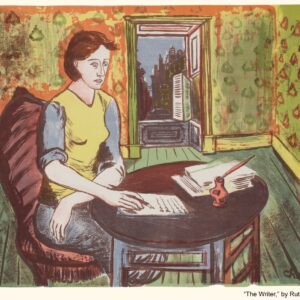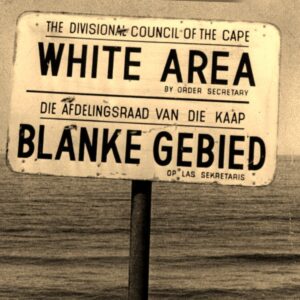
What Set Off the Showdown at the O.K. Corral? An Anti-Gun Law
Mark Lee Gardner on the Impact of 19th-Century Gun Control on Cowboy Culture
“Boys, throw up your hands, I want your guns.” Those words came from the mouth of Tombstone, Arizona’s chief of police, Virgil Earp, an instant before the most famous gunfight of all time erupted in an empty lot near the O.K. Corral. Virgil spoke those words to four “Cowboys” (part of a rustler gang), two Clanton brothers and two McLaury brothers, who’d been making threats for most of the day against the Earp brothers, Wyatt, Virgil, and Morgan, and Wyatt’s buddy Doc Holliday. But instead of “putting up their paws,” as Holliday recalled it, “they put up their revolvers and began firing.” Thirty seconds and some thirty shots later, two McLaurys and one Clanton lay dead.
The Cowboys’ threats were one thing, but what caused Virgil to deputize his brothers and Doc Holliday and make that legendary walk to confront the Clantons and McLaurys was Tombstone’s Ordinance No. 9, which prohibited the carrying of “any deadly weapon” within the city limits. The Cowboys were openly flaunting that law, and, in turn, disrespecting Virgil’s office. The chief of police wasn’t going to stand for it. The Cowboys would be disarmed whether they liked it or not. They didn’t like it.
It may come as a surprise that nearly every Old West boomtown had a similar anti-gun law as Tombstone’s. Deadly rows involving drunken cowboys, testosterone-fueled gamblers, or jealous johns were far too frequent, and the flying lead didn’t distinguish between the troublemakers and innocent bystanders. City fathers couldn’t care less about the right to keep and bear arms when it came to the safety of their constituents, and these leaders had the overriding support of the local press, which consistently condemned the gun violence on city streets and pushed for the strict enforcement of the law. “An honest man attending to his own business,” opined the Dodge City Times in 1878, “doesn’t require the constant companion of a six-shooter, to make him feel easy and safe.”
The chief of police wasn’t going to stand for it. The Cowboys would be disarmed whether they liked it or not.
In 1874, Wichita, Kansas, was the primary destination for Texas cattle herds, and with those herds came hundreds of dust-covered young cowboys eager for excitement—and they had money to burn, having just received their wages. In May of that year, the editor of Wichita’s Weekly Eagle set into type three lines: “The ordinance against the carrying of arms in the city must be enforced or there will be trouble in this town in less than thirty days.” Turns out, it didn’t even take one day. As the Eagle’s editor was composing the rest of that issue for the press, a Texas cowboy shot down a Black bricklayer working on a building on Wichita’s Main Street. This outrage led the Eagle to call on the mayor to reorganize the police force and strictly enforce the city’s laws, “else our streets will flow in blood before the ides of November.” The mayor’s first new hire to the force was a 26-year-old Wyatt Earp.
For Wyatt and other lawmen in the cattle and mining boomtowns of the West, their duties generally boiled down to two tasks: making arrests for disturbing the peace (drunk and disorderly) and taking guns away from those who insisted on carrying them. A surviving Dodge City Police Court docket reveals that for the period July through December, 1878 (Wyatt was Dodge’s assistant city marshal at this time), 46 arrests were made for disturbing the peace and 18 for carrying a concealed weapon or discharging a firearm within city limits. Although the arrests for breaking the gun law were the lesser of the two, it still amounted to 18 times in six months that a Dodge City lawman ran the risk of getting shot while personally disarming a man.
And that risk was quite real. In April, 1878, Dodge City marshal Ed Masterson was mortally wounded while attempting to disarm an inebriated cowboy. Two years later, Tombstone’s marshal Fred White was shot in the groin while in the act of yanking a revolver out of the hand of Cowboy leader Curly Bill Brocious. The marshal succumbed to his wound two days later. Wyatt, however, became a master at convincing a lawbreaker to surrender his weapon.
The Dodge City Times reported that the lawman “had a quiet way of taking the most desperate characters into custody, which invariably gave one the impression that the city was able to enforce her mandates and preserve her dignity. It wasn’t considered policy to draw a gun on Wyatt unless you got the drop and meant to burn powder without any preliminary talk.” What the Times didn’t explain was that Wyatt’s “quiet way” generally consisted of a debilitating knock on the head with the heavy barrel of his revolver.
It may come as a surprise that nearly every Old West boomtown had a similar anti-gun law as Tombstone’s.
Were these anti-gun laws in the Old West effective in reducing gun violence? If seriously enforced, especially by a Wyatt Earp type, generally yes. A man writing from Dodge City in November, 1876, credited Marshal Larry Degar and Assistant Marshal Earp with expertly managing the Texas cowpunchers that flooded the town. Consequently, he reported, “we have no deaths to record from the gay and festive revolver in the hands of whisky, in fact I think there has never been a shooting scrape even.” Three years later, in 1879, a newspaper correspondent noted that only two men had been killed during the summer and joked that Dodge’s policemen had been forced to target practice on tin oyster cans to keep up on their gun skills.
It was different, however, in Tombstone on a blustery October afternoon in 1881. A hatred for the Earps and Holliday had long been brewing with the Cowboys. “It was our intention to disarm them this time,” Wyatt remembered, “and put them in jail or else make a fight if they wanted it, and we well knew they would fight.” Indeed, Frank McLaury had already let it be known that he would never give up his weapons to an Earp. “I had rather die a fighting man,” he said, “than to be strangled.” So the Cowboys went for their guns. Virgil shouted, “Hold! I don’t want that!” But he might as well have been trying to stop the Earth from turning.
As the gun smoke cleared over the empty lot and deep red blood pooled beside the Cowboys’ dead bodies, a calm Wyatt Earp quipped to no one in particular, “We won’t have to disarm that party.”
__________________________________

Brothers of the Gun: Wyatt Earp, Doc Holliday, and a Reckoning in Tombstone by Mark Lee Gardner is available from Dutton, an imprint of Penguin Publishing Group, a division of Penguin Random House, LLC.
Mark Lee Gardner
Mark Lee Gardner is a recipient of the Frank Waters Award for Literary Excellence. His bestselling books, many of them award winners, include The Earth Is All That Lasts, Rough Riders, Shot All To Hell, and To Hell on a Fast Horse. An authority on the American West, Mark has appeared on numerous television programs and other media, including the hit Netflix docuseries Wyatt Earp and the Cowboy War. His YouTube video for WIRED’s Tech Support, where Mark answers questions from the Internet about the Wild West, has received several million views. A native of Missouri, he holds an MA in American studies from the University of Wyoming and lives with his family at the foot of Pikes Peak.



















